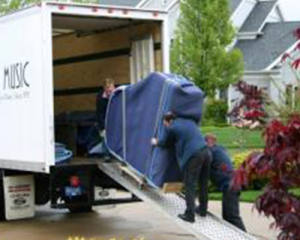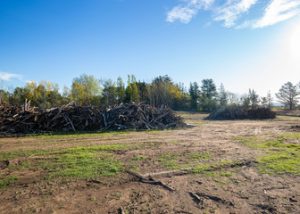When choosing movers, make sure you know their prices and what services they will provide. They should be transparent about their charges, either a flat fee or by the hour. Some companies may charge extra for things like parking or stairs.

Commercial movers use special equipment to move large items like photocopiers and vending machines. They also have the skills to handle bulky furniture. Contact Movers Southlake TX for professional help.
Residential movers have the skills and experience needed to ensure your move goes smoothly. They are trained in packing techniques, loading and unloading procedures, and transportation logistics. They also use high-quality packing materials to protect your belongings during transit. They may also offer specialty packaging for fragile items, furniture, and electronics. In addition, they are typically familiar with local traffic conditions and parking restrictions. They can also assist with disassembly and assembly of large furniture, connecting appliances, and more.
Unlike friends and family members who might not be as careful as you would like with your prized possessions, professional local movers are experienced in working efficiently while ensuring the safety of your belongings. They often work in teams to speed up the process and will have a clear plan for each room. They will usually pack items in a systematic manner, starting with less-used rooms and ending with the kitchen. They will also label each box according to its contents and destination room.
Commercial moves are much more complex than residential moves and can involve moving a wide variety of furniture and equipment. These movers are specially trained in the proper handling of heavy items, including specialized equipment such as toe jacks. They can even transport machinery over long distances using a tractor-trailer.
A good mover will send you a bill of lading, which is a legal contract between the customer and the company. It will list the services provided, the cost of each service, and other important information. Make sure to read it carefully and keep a copy for your records.
Reliability
Reliability is the ability of a system to perform its required functions under specified conditions for a defined period of time. It is also the degree to which a measurement, calculation, or specification can be trusted. This concept is important for businesses, as it helps determine the accuracy of data and allows companies to make informed decisions about their operations. In terms of a residential move, you can assess a moving company’s reliability by reading reviews and checking their credentials. For example, you can look for the DOT and motor carrier numbers that movers must display to indicate their compliance with Department of Transportation regulations. You can also verify whether a moving company has a license from the Better Business Bureau. This will help you avoid scams and other issues.
Reduced stress
Moving is one of life’s most stressful experiences, and it can have a negative impact on your mental health. However, there are a few simple strategies that can help reduce the stress of a move and make the process easier for everyone involved. These include planning ahead, decluttering, hiring a professional mover, and taking care of yourself.
Getting enough sleep and eating well are also crucial for maintaining your mental health during a move. Try to keep a regular schedule, and take breaks throughout the day to relax and recharge. You can also practice relaxation techniques, such as meditation and deep breathing, to help you manage stress during a move.
Residential movers have the expertise and equipment to pack your belongings safely, which will ensure they arrive at your new home in excellent condition. They know how to handle large, bulky items such as furniture and appliances, and they use proper lifting techniques to avoid injuries. This can save you time, money, and energy during the move, and it will also make unpacking a lot easier.
In addition to packing, professional movers will transport your belongings to and from your old and new homes. They will also provide you with quality packing supplies, such as boxes, bubble wrap, and tape. Their experience and skills will also reduce the chance of damage to your belongings during transit, which can be a significant source of stress.
Hiring a local moving company will also save you time and effort, which can be a huge burden during a move. A professional mover will also have a plan in place, from the first box to the last item, and they will work efficiently. This will make your move much simpler, which will decrease the chances of hiccups and delays.
Managing stress during a move can be difficult, but it is possible with careful preparation and a positive attitude. The key is to start early, create a checklist, and stick to it. It’s also important to get plenty of rest, eat well, and exercise regularly to stay healthy and maintain a good mood during the transition.
Cost
If you’re planning to hire residential movers, you should know the costs associated with them. The cost of a moving company varies by the size of your home, the distance of your move, and whether packing services are included. The cost of a truck rental is another factor to consider. It can range from $30 for a same-day local move to $3,500 for a long-distance move. If you decide to rent a truck yourself, be sure to include the cost of gas and tolls.
Most companies charge by the hour and base their prices on how many hours it takes to move a particular size home. They also take into account the weight of the items to be moved, which can vary considerably. However, it’s important to remember that volume can be misleading and the actual weight of your belongings is usually higher than what is estimated on a load ticket.
There are several other factors that can affect the cost of a move, including the number and size of boxes you use, how far you’re traveling, and whether your belongings require special handling or assembly. You’ll also need to purchase packing materials, such as bubble wrap, cardboard boxes, and tape. Moving companies often build the cost of these supplies into their estimates for full-service moves, but you can save money by purchasing them in bulk through a third-party provider.
In addition to the above costs, there may be other hidden fees that you’ll need to account for. These can include an equipment rental fee (for specialized equipment such as dollies or furniture pads), a long-carry charge (if crews have to carry your belongings a long way from the home to the truck), and a fuel surcharge (if fuel prices have increased since the original estimate).
To help minimize costs, make sure that you’re not shipping anything you don’t need. For instance, you can hold a garage sale or donate items to charity to reduce the amount of stuff you’ll need to ship. It’s also a good idea to create an itemized list of everything that will be packed and shipped, highlighting any large or heavy items that require special handling. This will prevent the accidental damage of expensive or fragile items during transport.






